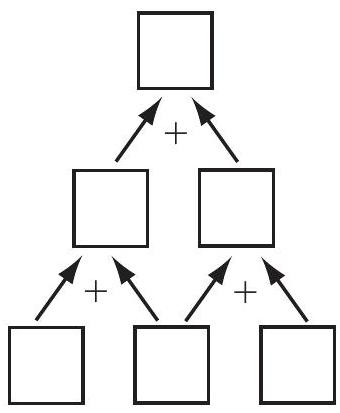Problem:
Three different one-digit positive integers are placed in the bottom row of cells. Numbers in adjacent cells are added and the sum is placed in the cell above them. In the second row, continue the same process to obtain a number in the top cell. What is the difference between the largest and smallest numbers possible in the top cell?

Answer Choices:
A.
B.
C.
D.
E.
Solution:
If the lower cells contain and , then the second row will contain and , and the top cell will contain . To obtain the smallest sum, place in the center cell and and in the outer ones. The top number will be . For the largest sum, place in the center cell and and in the outer ones. This top number will be . The difference is .
Answer: .
The problems on this page are the property of the MAA's American Mathematics Competitions